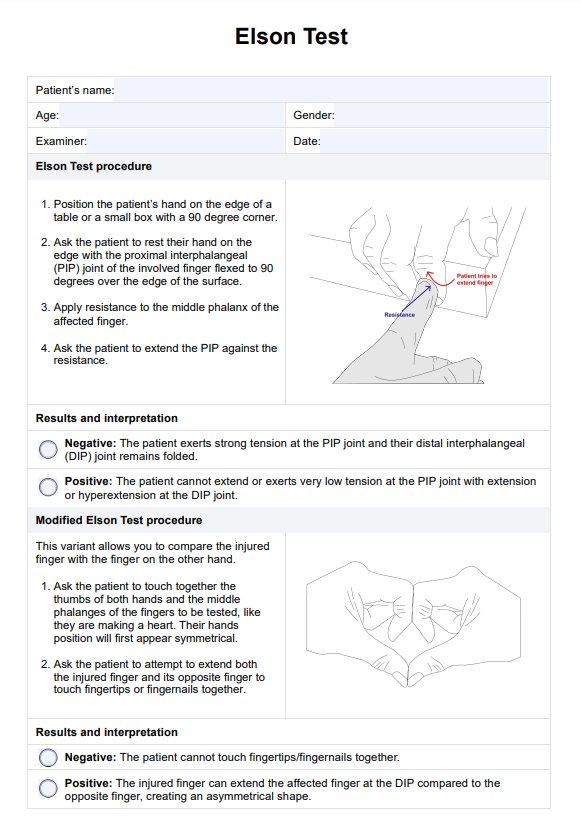You can test for a boutonniere deformity by checking the patient's ability to extend their proximal interphalangeal (PIP) joint while the distal interphalangeal joint (DIP) remains in a flexed position. A positive Elson test is a key method for identifying early signs of this deformity.

Elson Test
Check if your patient has a central slip injury using an Elson Test. Use our free template on how to do it.
Use Template
Elson Test Template
Commonly asked questions
The Elson Test is a common special test for detecting extensor tendon injuries, particularly central slip injuries. It assesses the patient's ability to extend the PIP joint while providing resistance to the middle phalanx.
A positive Elson test occurs when the patient is unable to exert strong tension at the PIP joint, and the distal interphalangeal joint (DIP) extends or hyperextends. This indicates a possible central slip injury or damage to the extensor tendon.
EHR and practice management software
Get started for free
*No credit card required
Free
$0/usd
Unlimited clients
Telehealth
1GB of storage
Client portal text
Automated billing and online payments











